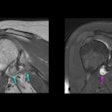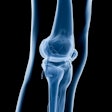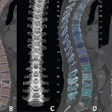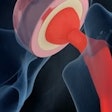
Triple lutzes, triple-loop combinations, and quadruple jumps are now standard in the repertoire of figure skaters. But these athletes would be skating on thin ice without the power and strength provided by the hamstring muscles. Because the average skater takes on nine times his or her body weight after landing a jump, keeping this part of the lower extremities in top-notch condition is crucial.
"Inflexibility is a concern in figure skaters because strenuous training and weight training can cause muscle tightness. Muscle groups that are commonly inflexible in figures skaters include hamstrings," said Jeff Schneider, an athletic trainer and strength and conditioning coach at the University of Delaware in Wilmington.
"The most common injuries include muscle strains of the quadriceps (and) hamstrings…many overuse injuries can be prevented. Maintaining adequate strength and flexibility is important," echoed Dr. James Moeller, a sports medicine specialist based in Auburn Hills, MI, in an article on common figure-skating injuries (drkoop.com, April 5, 2000).
One potential hamstring-related injury that a skater might be prone to is an avulsion of the ischial tuberosity apophysis. "The ischial tuberosity is the site of origin of the hamstring and adductor muscles of the thigh. The forceful pull of these muscles leads to avulsion of an open ischial apophysis…this injury is commonly associated with jumpers, runners, baseball players, figure skaters, and even cheerleaders," (Skeletal Trauma, Dr. Jamshid Tehranzadeh, University of California, Irvine).
So what part does imaging play in divining hamstring injuries? Back in 1995, Dr. Eric Brandser and colleagues from the University of Iowa College of Medicine in Iowa City wrote that "hamstring injuries are fairly common; however, most of these injuries are managed with conservative measures, and imaging studies are not usually performed," (Radiology, October 1995: Vol.197:1, pp. 257-262).
In that study, the authors reviewed the x-ray, CT, and MRI characteristics of hamstring injuries. They found that radiographic features depended on how much time had elapsed between injury and imaging, with chronic injuries appearing as either separation of an enlarged apophyseal remnant or overgrowth of the ischium. CT findings were highly suggestive of subacute hamstring avulsion, subacute fractures, and the oblique orientation of the apophysis.
Brandser’s group touted MRI for being particularly suitable for detecting soft-tissue damage in high-performance athletes in order to search for repairable injuries.
Six years later, Drs. Arthur De Smet and Thomas Best from the University of Wisconsin Hospital and Clinics in Madison relied on MRI to summarize the distribution and location of acute hamstring injuries in athletes. They performed T2-weighted MR scans on 15 college athletes and found that 10 had injuries of a single muscle: 6 of the biceps femoris, three of the semitendinosus, and 1 of the semimembranosus. The injuries occurred in various locations, including the proximal musculotendinous junction and the musculotendinous junction within the muscle (American Journal of Roentgenology, February 2000, Vol.174:2, pp. 393-399).
In a more recent study from the Victoria House Hospital in Melbourne, Australia, radiologists sought to describe the MR imaging findings following acute hamstring injury. Dr. George Koulouris presented the results of this investigation at the 2001 RSNA meeting in Chicago.
For this study, the group retrospectively reviewed the findings of 224 exams in 208 professional athletes. MRI was done in 102 cases on a Signa Horizon MR/i l.5-tesla scanner (GE Medical Systems, Waukesha, WI). Axial and coronal oblique images were obtained. Sonography was performed in 156 cases, and both modalities in 34 instances. The mean duration of symptoms was 4.7 days.
They examined the frequency of muscle involvement, the location of the injury within the musculotendinous unit, the extent of injury, and whether one modality was better than the other at discriminating hamstring avulsion from musculotendinous injury.
According to the results, the biceps femoris was the most common muscle injured (150 out of 224 exams). Out of the 150 patients, 86 had injuries of the musculotendinous junction of biceps, 51 had myofascial injuries, and 13 had muscle belly injuries alone.
"Sixteen patients with surgical confirmation of hamstring avulsion from the ischial tuberosity were reliably diagnosed with MR imaging," Koulouris said. A dozen of these same patients also had ultrasound exams, the results of which pinpointed the avulsion in seven out of the 12, he added.
The group also found that proximal injuries of biceps were more common than distal injuries. The semitendinosus muscle was more often injured in the distal half of the muscle.
Finally, hematoma was such a common finding (170 out of 224 cases) that Koulouris and his colleagues considered it to be a reliable sign for hamstring injury on MRI. They concluded that MRI is the preferred modality for hamstring injury investigation, particularly if a choice must be made between surgical and conservative management.
Koulouris noted that "in young patients, the weakest link is enthesis. The avulsion can occur in the form of a fracture."
This is especially important information for figure skaters who start jumping at an age when their musculoskeletal system is still a work-in-progress. Skater Timothy Goebel, who won the bronze medal in men’s figure skating on Tuesday, began practicing quadruple jumps when he was 14 years old. Now 21, he is known as the "Quad King," doing 15-20 such jumps every day.
To top it off, modern figure skaters trainer harder and more frequently than in the past, up to six days a week, 12 months a year. If they aren’t training, they're competing, and if they aren’t competing, they're touring with ice-dancing shows. Compare that to the skating regimen 20 years ago, when figure skaters began training in July, hit the competition circuit from October until April, and then turned their attention to other forms of cross-training in order to give their bodies a break from the ice.
But despite some recent proactive measures by the figure-skating community to promote healthy training -- the U.S. Figure Skating Association has created Podium 2002 Medical Care, in which each athlete is assigned a physician to provide advice and education -- Olympic-caliber skaters are going to keep jumping those jumps and putting their hamstrings to the test.
"That’s what sports is all about, pushing the envelope," Goebel said in an interview with the Associated Press. "If you want to be a champion, that’s what you have to do."
By Shalmali Pal
AuntMinnie.com staff writer
February 25, 2002
Copyright © 2002 AuntMinnie.com


















